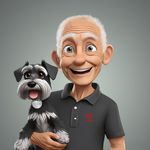Pigeon Eye Photography issues with reflection?
Copy link to clipboard
Copied
Hello, Im a pigeon photograph since about 2 years and the pigeon eye is an important part in the pigeon breeding industry for most people, I recently got myself a macro lense to also start implementing the eye within my pictures unfortunately ive been running into the same issue that there is alot of reflection inside the eye i already tried different angles and distances to the eye but the reflections always seem to be there in some part of the eye. i also seem to struggle alot with the Depth of field and seem to only get half of the eye focused most of the time. Hopefully someone has an idea what i can improve to get closer to what the professional one looks like.
Explore related tutorials & articles
Copy link to clipboard
Copied
A reflection in the eye is so ubiquitous that it is considered a requirement of a "natural" look. Photographers add eye reflections if they're not pronounced enough.
At least for people shots 😉
This is after all a shiny convex surface. The light used to take the shot has to reflect somewhere.
The standard way to eliminate reflection is to use cross-polarized light. That means a polarizer on the lens, and polarizing film on the light source, rotated 90° relative to each other. For this to work, however, the light needs to come in from a 45° angle. Straight on won't work. If you use one light 45° upwards, that should look fairly natural in terms of the direction of the light, and hopefully without too much hard shadows.
It's also possible to put polarizing film on a softbox. That will soften the shadows.
Copy link to clipboard
Copied
D Fosse is spot on - an eye without any reflection looks flat and dead, as any wildlife painter or illustrator will know.
As for depth of field, a smaller aperture (i.e. larger f stop number) will bring greater depth of field but it will always be limited in macro photography. With some subjects you can work around it with multiple images taken at different focus points then stacked together (look up focus stacking) but I doubt that would be practical on a relatively large and live moving subject such as a pigeon.
Dave
Copy link to clipboard
Copied
Action sports photographers have the same problems. Use fast shutter and continuous shooting mode.
FYI: How to Get Clean Images from High ISO Photos
As @D Fosse said, eye reflection is normal. As long as it's not blown out, it should be OK.
Hope that helps.
Copy link to clipboard
Copied
The definitive guide to getting the best results with this, and other, aspects of photography, is Fil Hunter's Light Science & Magic. I consider it the single most important source of information for close up, table top, commercial etc. photography. There are PDF files available for early versions if you look around, but I wouldn't be without a copy on your book shelf. I have two with the latest being the 5th edition.
Copy link to clipboard
Copied
One thing I will say right off the bat, is to get further away with a longer focal length. It's easier to get the depth of field you need, and it tightens what the book calls the family of angles. This graphic demonstrates that the closer the camera to a convex reflective object, the wider the field of reflections
Copy link to clipboard
Copied
Note, I quickly knocked up the above graphic with Photoshop, and I can see that I don't have the angle of incidence spot on, but it still demonstrates the point.
Copy link to clipboard
Copied
How about using a translucent light tent? It would have diffuse light from all directions, so there would be few specular reflections. As others have said, they would look sort of flat, but I can see why a breeder might want to see the whole iris, like for identification.
Copy link to clipboard
Copied
John I did think about that, but decided it would too big an ask for the pigeon to stay put in a light tent.
One of the trickier jobs I had when doing commercial work was a pewter cup. It had a mirror surface and was showing the seems when shot in a light tent. I ended up with this arrangement, but what the image does not show is that I had a sheet of whight paper wioth a small hole in front of the lens. I would have been well shut down, so only the centre of the front element needed to be uncovered. I am not sure what a pigeon would have thought about being shut inside this.







